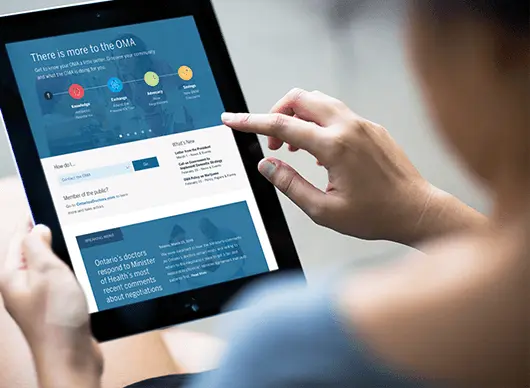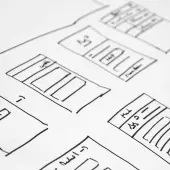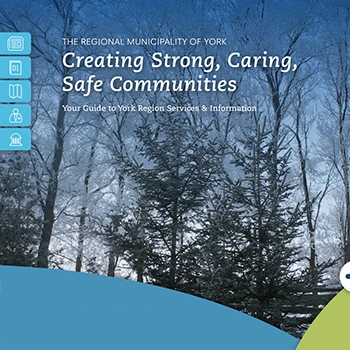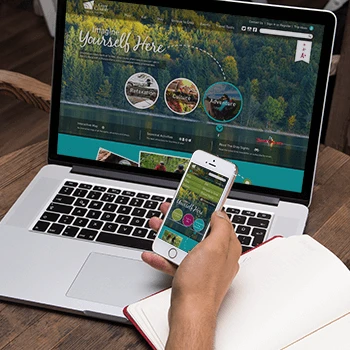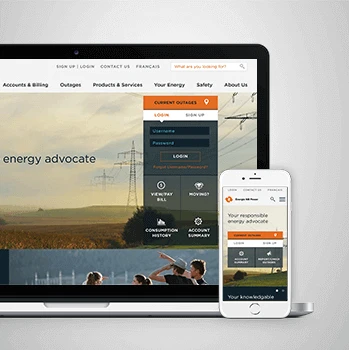What exactly is web UX design and why does our website need it?
Web UX design focuses on how people experience your website from first click to final conversion. Through our Experience Thinking framework, we examine your brand experience, content experience, product experience, and service experience to create websites that facilitate tasks by presenting content and functions in ways users naturally understand and expect.
Tip: Evaluate your current website against all four Experience Thinking quadrants to identify gaps that might be hindering user engagement.
How does Akendi approach web UX design differently?
We use Experience Thinking to create connected web experiences. Rather than just focusing on individual pages or features, we design the entire user journey across your brand, content, product, and service touchpoints. This holistic approach ensures every element works together to support user goals and business objectives.
Tip: Look for web UX approaches that connect all customer touchpoints rather than optimizing individual pages in isolation.
What's the difference between web UX design and website design?
Website design often focuses on visual aesthetics, while web UX design prioritizes user behavior, task completion, and experience quality. We research how users think, what they need to accomplish, and design the entire interaction flow before considering visual elements. The goal is making your website content and functionality usable and relevant to users.
Tip: Ensure your web design process starts with understanding user needs and behaviors before moving to visual design decisions.
How do you determine if our website needs UX improvements?
We analyze user behavior patterns, conversion rates, task completion rates, and conduct usability testing to identify friction points. Through Experience Thinking assessment, we examine how well your website expresses your brand, organizes content, supports product interactions, and connects to your broader service experience.
Tip: Monitor both quantitative metrics like bounce rates and qualitative feedback like user complaints to identify UX issues early.
What business outcomes can web UX design deliver?
Effective web UX design increases conversion rates, reduces support calls, improves customer satisfaction, and strengthens brand perception. By applying Experience Thinking principles, we create websites that turn visitors into customers and customers into advocates through connected, meaningful experiences across all touchpoints.
Tip: Establish baseline metrics for conversion rates, task completion times, and user satisfaction before starting UX improvements to measure impact.
How does foresight design factor into web UX strategy?
Foresight design helps us anticipate future user needs, technological changes, and market shifts that could impact your website experience. We design adaptive systems that can evolve with changing user expectations and emerging technologies, ensuring your website remains effective over time rather than requiring frequent overhauls.
Tip: Plan your website architecture to accommodate future content growth and technology integration rather than just solving current problems.
What role does AI play in modern web UX design?
AI enhances web UX design through personalization, predictive content delivery, and automated user assistance. We integrate AI thoughtfully to improve user experiences while maintaining human oversight for strategic decisions. AI helps analyze user patterns, generate design variations, and optimize content presentation based on individual user behavior.
Tip: Start with AI applications that enhance existing user journeys rather than completely replacing human interaction patterns.
What research methods do you use for web UX projects?
We combine user interviews, usability testing, analytics analysis, and competitive research to understand how people interact with websites. Our research examines the complete Experience Thinking framework - how users perceive your brand through the website, how they consume content, interact with products, and connect to your services.
Tip: Include both current users and potential users in research to understand different experience needs and expectations.
How do you understand our users' mental models for website navigation?
We conduct card sorting exercises, tree testing, and user journey mapping to understand how people naturally organize and expect to find information. This research informs information architecture that matches users' mental models, reducing cognitive load and making your website intuitive to navigate.
Tip: Test your website navigation with people unfamiliar with your business to identify assumptions that might confuse new users.
What insights does web analytics provide for UX design?
Analytics reveal user behavior patterns, drop-off points, popular content, and conversion paths. We analyze this data to identify where users struggle, what content resonates, and how different user segments behave. This quantitative data complements qualitative research to create evidence-based design decisions.
Tip: Focus on behavioral metrics like time on task and click patterns rather than just traffic volume to understand UX effectiveness.
How do you research mobile vs desktop user behavior differences?
We analyze usage patterns across devices to understand context-specific user needs. Mobile users often have different goals, attention spans, and interaction capabilities than desktop users. Our research identifies these differences to create responsive experiences that work effectively for each context and device type.
Tip: Test your website thoroughly on actual mobile devices, not just desktop browser simulation, to understand real mobile user experience.
What competitive research do you conduct for web UX projects?
We analyze competitor websites to understand industry standards, identify opportunities for differentiation, and discover best practices. This includes examining their information architecture, interaction patterns, content strategy, and overall user experience approach to identify gaps and opportunities for your website.
Tip: Study competitors' user flows for key tasks rather than just their visual design to understand strategic experience decisions.
How do you validate web UX design concepts before development?
We create interactive prototypes and conduct usability testing to validate design concepts with real users. This includes testing navigation flows, content organization, form interactions, and key user tasks. Validation helps identify issues early when changes are still cost-effective to implement.
Tip: Test prototypes with users performing realistic tasks rather than just gathering opinions about design concepts.
What research helps understand content effectiveness?
We conduct content audits, readability analysis, and user comprehension testing to understand how effectively your content serves user needs. Through the Experience Thinking content quadrant, we examine how information is packaged and consumed across different platforms and channels to ensure clarity and relevance.
Tip: Test content comprehension with users who represent your actual audience rather than internal stakeholders who already understand your business.
How do you approach information architecture for complex websites?
We start by understanding user mental models and task flows, then organize content in hierarchical structures that match how people naturally think about your information, often with card sorting research. Using Experience Thinking principles, we ensure the architecture supports your brand strategy, content strategy, product goals, and service delivery across all touchpoints.
Tip: Organize content based on user goals and tasks rather than internal organizational structure to improve findability.
What's your process for designing website user flows?
We map user journeys from entry point to goal completion, identifying all touchpoints, decisions, and potential friction areas. Our flow design considers the complete Experience Thinking framework, ensuring each step supports brand expression, content consumption, product interaction, and service connection.
Tip: Design user flows that accommodate different entry points and user contexts rather than assuming linear navigation patterns.
How do you design for different user types on the same website?
We create persona-based navigation and content strategies that serve multiple user types without creating confusion. This includes designing flexible information architecture, personalized content recommendations, and multiple pathway options that guide different users toward their specific goals efficiently.
Tip: Provide clear wayfinding elements that help different user types identify their relevant path quickly rather than making everyone navigate the same structure.
What principles guide your visual design decisions for websites?
Visual design serves usability and brand expression through Experience Thinking principles. We use typography, color, spacing, and imagery to create clear hierarchy, guide attention, and express brand personality while ensuring accessibility and cross-device functionality. Every visual decision supports user task completion.
Tip: Ensure visual design choices enhance rather than compete with content and functionality for user attention.
How do you design responsive experiences across devices?
We design mobile-first experiences that scale appropriately to larger screens, considering context-specific user needs for each device. This includes optimizing touch interactions, adapting content hierarchy, and ensuring consistent brand and functional experience across all devices and screen sizes.
Tip: Design for thumb-friendly mobile interactions and ensure key actions are easily accessible on touch devices.
How does foresight design influence your web design decisions?
Foresight design helps us create websites that can adapt to future user expectations, content growth, and technological changes. We design flexible systems and modular components that can evolve without complete redesigns, anticipating how user behavior and technology might shift over time.
Tip: Invest in flexible content management systems and modular design components that can accommodate future business needs.
What accessibility considerations are built into your design process?
Accessibility is integrated throughout our design process, not added afterward. We design for diverse abilities through color contrast, keyboard navigation, screen reader compatibility, and clear content structure. This inclusive approach ensures your website serves all users effectively and meets compliance requirements.
Tip: Test your website with actual assistive technologies and users with disabilities rather than relying only on automated accessibility tools.
How do you approach content strategy for websites?
Through our Experience Thinking framework, we design content experiences that enhance the product and service experience. Content strategy involves understanding how information is packaged and consumed across platforms, ensuring content is relevant, attention-grabbing, and easy to access while creating smooth information flow.
Tip: Audit existing content performance and user feedback before creating new content to understand what actually serves user needs.
What makes website content more scannable and usable?
We structure content with clear headings, bullet points, short paragraphs, and visual hierarchy that supports scanning behavior. Content is organized around user questions and tasks, using language and terminology that matches how your audience naturally thinks about your offerings.
Tip: Write content that answers specific user questions rather than just describing features to improve task completion rates.
How do you optimize content for both humans and search engines?
We create content strategies that serve user needs first, which naturally aligns with search engine optimization. This includes using clear, descriptive headings, organizing content logically, and ensuring fast loading times - all factors that improve both user experience and search rankings.
Tip: Focus on creating genuinely helpful content for users rather than keyword stuffing, as search engines increasingly reward user-focused content.
What content governance do you recommend for websites?
We establish content standards, review processes, and maintenance schedules that keep website content accurate and current. This includes defining content ownership, update responsibilities, and performance measurement to ensure content continues serving user needs over time.
Tip: Establish regular content review cycles and assign clear ownership to prevent outdated information from degrading user experience.
How do you handle content localization for different markets?
Content localization goes beyond translation to consider cultural context, local user behavior, and market-specific needs. We adapt content structure, imagery, and interaction patterns to serve different cultural expectations while maintaining brand consistency and Experience Thinking principles.
Tip: Test localized content with native speakers in target markets rather than relying only on translation services to ensure cultural appropriateness.
What role does content personalization play in web UX?
Personalization helps deliver relevant content based on user behavior, preferences, and context. We design personalization strategies that enhance user experience without creating filter bubbles or overwhelming users with choices. The goal is showing the right content at the right time for each user's needs.
Tip: Start with simple personalization based on user location or previous page views before implementing complex behavioral targeting.
How do you measure content effectiveness?
We track content performance through user engagement metrics, task completion rates, and user feedback. This includes measuring how content supports key user journeys, reduces support requests, and contributes to business goals. Regular content performance review ensures continued effectiveness.
Tip: Monitor both quantitative metrics like time on page and qualitative feedback to understand how content actually helps users accomplish their goals.
How do you work with development teams during implementation?
We provide detailed design specifications, annotated wireframes, and ongoing design support throughout development. Our collaborative approach includes regular check-ins, design reviews, and user experience testing during build phases to maintain design quality and address technical constraints while preserving user experience goals.
Tip: Include UX designers in development planning sessions to identify potential experience issues before implementation begins.
What happens when technical constraints conflict with UX design?
We work collaboratively to find solutions that maintain user experience quality within technical constraints. This involves prioritizing core user needs, exploring alternative approaches, and sometimes phasing implementation to balance technical feasibility with experience goals. Communication and shared problem-solving are key.
Tip: Involve both UX designers and developers in constraint discussions to find creative solutions that serve both user needs and technical requirements.
How do you prevent design drift during development?
Design drift occurs when implementation gradually deviates from tested designs due to technical constraints and timeline pressures. We establish design quality assurance processes, regular review checkpoints, and collaborative problem-solving approaches that maintain design integrity while accommodating necessary technical adjustments.
Tip: Schedule regular UX review sessions during development rather than waiting until launch to discover design deviations.
What design documentation do you provide for development?
We create comprehensive design specifications including interaction details, responsive behavior, error states, and accessibility requirements. Documentation includes annotated wireframes, design patterns, and implementation guidelines that help developers understand both the what and why of design decisions.
Tip: Request design documentation that includes rationale for decisions, not just visual specifications, to help development teams make appropriate adjustments.
How do you handle cross-browser and device compatibility?
We design with technical constraints in mind and test across browsers and devices throughout the design process. Our approach includes progressive enhancement, graceful degradation, and fallback options that ensure core functionality works across different technical environments while maintaining optimal experience where possible.
Tip: Define minimum viable experience levels for older browsers rather than trying to achieve identical experience across all platforms.
What testing do you conduct during development?
We perform usability testing with working prototypes and beta versions to identify issues before launch. This includes testing actual performance, real device interactions, and complete user flows in realistic conditions. Early testing helps catch issues when changes are still cost-effective.
Tip: Test with real users on actual devices using real data rather than simulated conditions to identify authentic user experience issues.
How do you handle website performance optimization for UX?
Performance is a crucial UX factor that affects user satisfaction and task completion. We work with development teams to optimize loading times, image compression, and code efficiency while maintaining design quality. Fast-loading websites reduce user frustration and improve conversion rates significantly.
Tip: Monitor page loading times from your users' actual locations and devices rather than just your office network to understand real performance impact.
How do you measure web UX design success?
We establish success metrics before redesign including task completion rates, user satisfaction scores, conversion rates, and support request volume. Through Experience Thinking measurement, we track how the website enhances brand perception, content engagement, product interaction, and service connection across the complete user journey.
Tip: Set baseline measurements before UX improvements begin so you can demonstrate concrete impact on user experience and business outcomes.
What user behavior metrics indicate good web UX?
Key indicators include high task completion rates, low bounce rates on key pages, appropriate time on task, and positive user feedback. We also monitor conversion rates, reduced support calls, and user return patterns. These metrics collectively indicate whether the website effectively serves user needs.
Tip: Track user behavior metrics that correlate with business goals rather than vanity metrics that don't indicate actual user success.
How often should websites undergo UX evaluation?
We recommend annual UX audits with quarterly performance reviews to identify emerging issues early. User expectations, technology, and business needs evolve continuously, so regular evaluation ensures your website continues serving users effectively. Foresight design principles help anticipate when updates become necessary.
Tip: Monitor user feedback and behavior changes continuously rather than waiting for annual reviews to identify urgent UX issues.
What ongoing optimization do you recommend post-launch?
Post-launch optimization includes continuous user feedback collection, A/B testing of key elements, performance monitoring, and iterative improvements based on user behavior data. We establish optimization processes that enable regular enhancement without requiring complete redesigns.
Tip: Implement feedback collection systems that capture both user satisfaction and specific improvement suggestions rather than just ratings.
How do you track ROI from web UX improvements?
ROI tracking includes measuring conversion rate improvements, reduced support costs, increased user engagement, and customer lifetime value changes. We help establish measurement frameworks that connect UX improvements to business outcomes, demonstrating the value of experience investment over time.
Tip: Track both immediate conversion improvements and longer-term customer relationship benefits to understand full UX investment value.
What user feedback methods work best for websites?
Effective feedback collection includes post-task surveys, periodic user interviews, usability testing sessions, and in-context feedback widgets. We recommend multiple feedback channels that capture both specific task experiences and overall website satisfaction to provide comprehensive user insights.
Tip: Make feedback collection easy and contextual rather than interrupting user tasks to improve response rates and quality.
How do you demonstrate UX impact to stakeholders?
We create comprehensive reports that connect UX improvements to business metrics, user satisfaction changes, and competitive advantages. Impact demonstration includes before/after comparisons, user testimonials, and quantified improvements in key performance indicators that matter to your organization.
Tip: Present UX impact in business terms and context that resonate with different stakeholder priorities rather than only design-focused metrics.
What's involved in a typical web UX design project timeline?
Projects typically include research and discovery, information architecture design, wireframing and prototyping, visual design, usability testing, and implementation support. Using Experience Thinking framework, we ensure all four quadrants - brand, content, product, and service experiences - are addressed throughout the timeline.
Tip: Plan for iterative design and testing cycles rather than linear progression to accommodate learning and improvements throughout the project.
How involved will our team need to be during the project?
Your team's involvement is crucial for project success, including stakeholder interviews, content review, design feedback, and user testing coordination. We schedule specific touchpoints where your market knowledge and strategic perspective enhance our design decisions and ensure solutions align with business goals.
Tip: Assign dedicated team members with decision-making authority to avoid delays caused by unclear feedback or approval processes.
What deliverables do you provide throughout the project?
Deliverables include user research findings, site maps, wireframes, interactive prototypes, visual designs, style guides, and implementation specifications. Each deliverable is designed for practical application by your team and includes rationale that helps inform future decisions and updates.
Tip: Review deliverables against your specific business goals and user needs rather than just design preferences to ensure strategic alignment.
How do you handle project scope changes during development?
Scope changes are managed through collaborative evaluation of impact on user experience, timeline, and budget. We assess how changes affect the overall Experience Thinking framework and user journey to ensure modifications enhance rather than detract from project goals and user experience quality.
Tip: Document the rationale for scope changes to maintain project focus and ensure new requirements genuinely improve user experience outcomes.
What content and resources do you need from our team?
We need access to existing user data, current website analytics, brand guidelines, product information, and key stakeholders for interviews. Content requirements include current website copy, images, and any existing user research or feedback that informs design decisions.
Tip: Gather user feedback and analytics data before the project begins to provide designers with real insights rather than assumptions about user behavior.
How do you ensure projects stay within budget and timeline?
Project management includes regular progress reviews, clear milestone definitions, and proactive communication about any timeline or scope challenges. We use agile methodologies that enable adjustment while maintaining quality standards and keeping stakeholders informed throughout the process.
Tip: Establish clear priorities and decision-making processes upfront to prevent scope creep and timeline delays during the project.
What happens after the website launch?
Post-launch support includes monitoring user behavior, gathering feedback, addressing immediate issues, and planning optimization improvements. We provide training for your team, documentation for ongoing maintenance, and recommendations for continuous improvement based on user data and changing needs.
Tip: Plan post-launch optimization budget and resources before launch to enable quick response to user feedback and performance issues.
